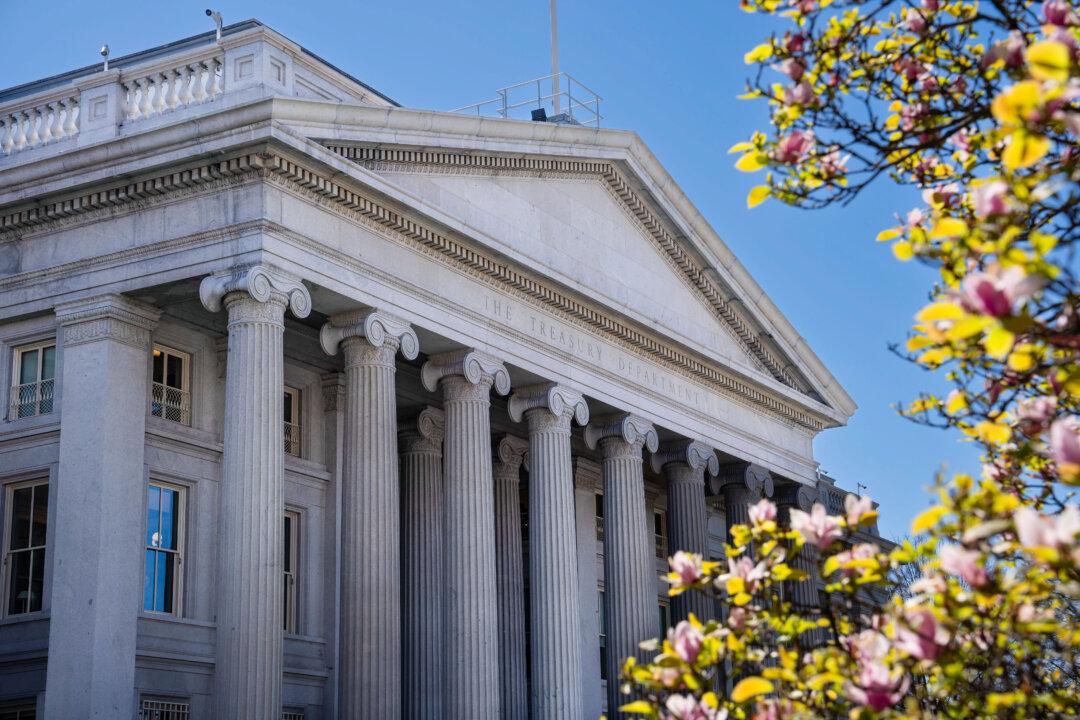The federal government posted a smaller-than-expected budget deficit in June, caused by various calendar effects that allowed tax receipts to grow and outlays to fall, according to the Monthly Treasury Statement.
Last month, the federal deficit was $66 billion, down 71 percent from a year ago.
New Treasury data show that receipts advanced 11 percent year over year, totaling $466 billion. The increase, according to the monthly report, was fueled by deferred tax payments from parts of the country because of federally declared natural disasters.
Outlays declined 18 percent from June 2023 to $532 billion. However, officials say spending levels would have increased 11 percent, to $625 billion, if July 2023 and June 2024 had begun on a weekday.
Fiscal year to date, revenues are up 10 percent, to $3.75 trillion, and outlays are up 5 percent, to $5.02 trillion.
The federal shortfall was $1.27 trillion in the first nine months of fiscal year 2024, down 9 percent from the same time a year ago.
The largest monthly spending items were Social Security ($129 billion), education ($80 billion), health ($75 billion), and national defense ($67 billion).
Net interest payments were the third-largest budgetary item in June, totaling $81 billion. Fiscal year to date, net interest charges have jumped to $682 billion, up 33 percent from last year.
Forty-four percent of the individual income taxes collected ($184 billion) were dedicated to interest charges in June.
The 12-month rolling deficit totaled $1.6 trillion, $154 billion lower than the previous 12-month span, the Committee for a Responsible Federal Budget (CRFB) reported.
“The gap between spending and revenues continue to add to our deteriorating fiscal situation,” the CRFB said in a report.
“Debt is projected to continue rising from 97.3 percent of GDP at the end of fiscal year 2023 to a record 106.2 percent of GDP by 2027 and 122.4 percent by the end of the decade.
An Updated Look at the Budget
In June, the Congressional Budget Office (CBO) revised its deficit outlook for fiscal year 2024.The nonpartisan budget watchdog projected that the federal government’s budget shortfall would be $1.9 trillion, $400 billion higher than its previous estimate. In addition, this would be up from last year’s $1.7 trillion deficit.
“Some costs that have not yet been recorded contribute to CBO’s larger deficit projection for 2024, including the outlays that the Administration might record for cancellations of student loan debt resulting from a proposed rule published in April and some outlays stemming from legislation providing assistance to Israel, Ukraine, and countries in the Indo-Pacific region,” the CBO said in its latest Monthly Budget Review.
CBO Director Phillip Swagel appeared before the Senate Budget Committee on July 10 and told lawmakers that fiscal risks “are mounting” because of ballooning interest payments and higher debt.
In an exchange with Sen. John Kennedy (R-La.), Mr. Swagel estimated that the federal government would need to cut spending by 7 percent to 8 percent “just to stabilize the debt.”
“We'd still have a high debt,” Mr. Swagel said.
Managing Debts and Deficits
Over the past 12 months, the Treasury has issued about $2 trillion in new short-term debt securities (T-bills) to help manage the growing debt and rising deficits.In April, the Treasury estimated that it will borrow $847 billion in the July-to-September quarter.
The share of outstanding T-bills as a share of total debt outstanding has risen since June 2023; that is a problem, says Torsten Slok, the chief economist at Apollo.
“A big increase in supply requires a big increase in demand,” he said in a July 4 note. “Growing the amount of T-bills outstanding while the Fed at the same time is doing QT [quantitative tightening] increases the risk of an accident in the funding market,” he said in an email sent to The Epoch Times.
The challenge has been the tepid demand for short- and long-term debt securities.
For example, the July 11 $22 billion auction of 30-year bonds was mixed, with the yield coming in 8 basis points higher than the expectation. In addition, primary dealers—financial institutions that scoop up supply that investors do not purchase—bought 16 percent of the bonds.
At the July 9 $57 billion auction of three-year notes, the results were average as primary dealers picked up 15 percent of supply.
The 12-month average has been around 13 percent.
Should the Federal Reserve start cutting interest rates soon, there could be a diminishing appetite for Treasury bills from U.S. households and money market funds. As a result, this trend “would put upward pressure on short rates because of the big supply of Treasury bills not being met by similar strong demand,” Mr. Slok said.
The consumer price index fell to 3 percent last month, from 3.3 percent in May.







